Kenya’s Breeding Sector: a study on the knowledge and capacity needs of inseminators in Nakuru County and Directorate of Veterinary Services
Whereas the dairy sector in Kenya is developing at a fast pace, the demand for milk is increasing due to population growth and changing consumption patterns. This increased demand gives rise to a window of opportunities for growth and the development of the dairy sector, which heavily depends on the availability and quality of artificial services. The Netherlands and Kenya Governments are striving to bridge the gap between bovine semen demand and supply while aiming to increase the quality of locally available bovine semen
"The need to organise the sector more efficiently is growing by the day," - Bart Pauwels, Agriculture Counselor at the Embassy of the Netherlands, Nairobi.
Signing of the Minutes of the Agriculture Working Group by heads of delegation and the Veterinary working group from Kenya and the Netherlands at the Hague, the Netherlands in April 2023
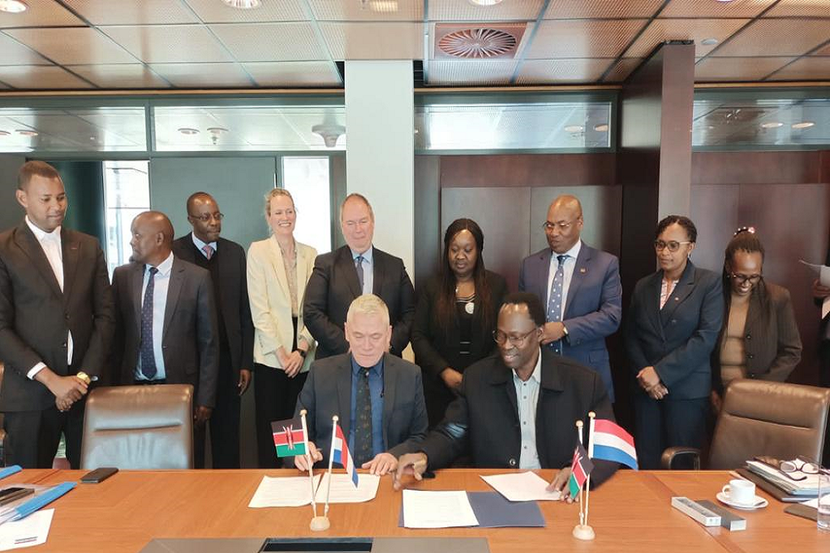
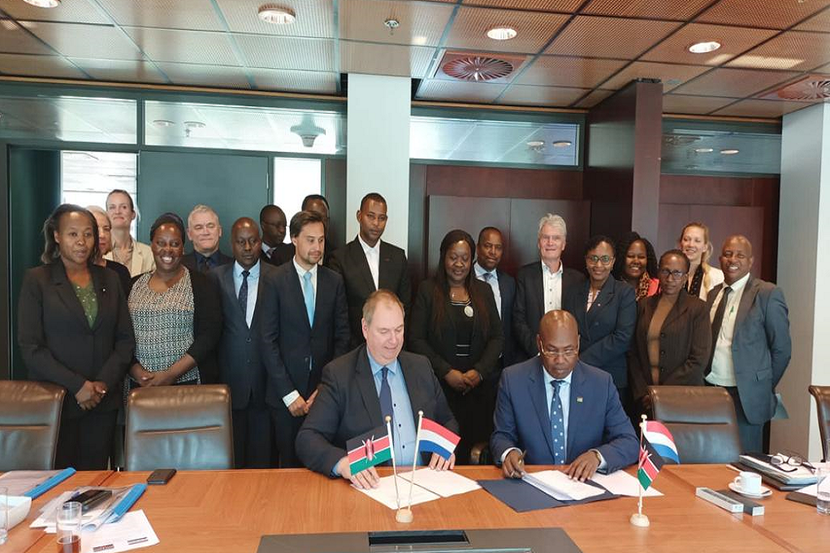
Former PS Livestock Mr. Harry Kimtai and Agriculture Counseller Bart Pauwels observing the breeding facitlity at CRV in the Netherlands
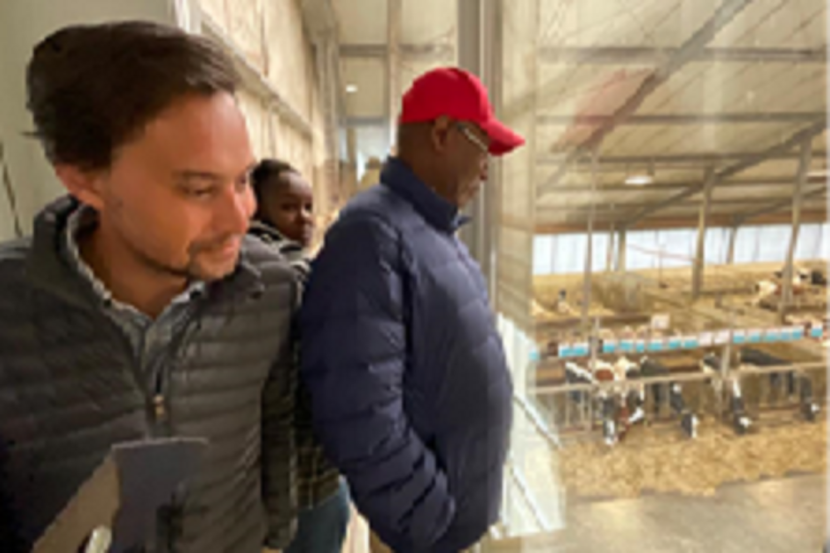
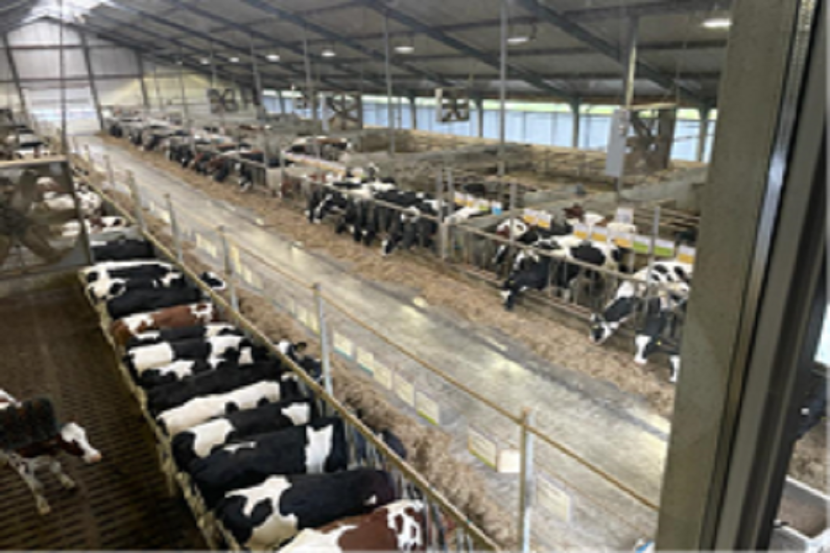
Kenyan Breeding Sector: A Study
In order to better understand the breeding sector in Kenya, the Embassy of the Kingdom of The Netherlands commissioned a study which was conducted mid-2022 by the Dairy Training Centre (DTC) in Oenkerk, The Netherlands. The objective of the study was to identify the knowledge and training needs of the inseminators of Nakuru County as well as those of the Directorate of Veterinary Service staff with the view to ultimately help increase successful inseminations in Kenya.
The study targeted respondents from both Kenya and The Netherlands drawn from various breeding sector stakeholders including the Directorate of Veterinary Services, Kenya Veterinary Board, Nakuru County Government, Nakuru County Director of Veterinary Services, county dairy cooperative unions, Agricultural Development Corporation, artificial inseminators’ training institutions, bovine semen breeding companies, and artificial inseminators, amongst others.
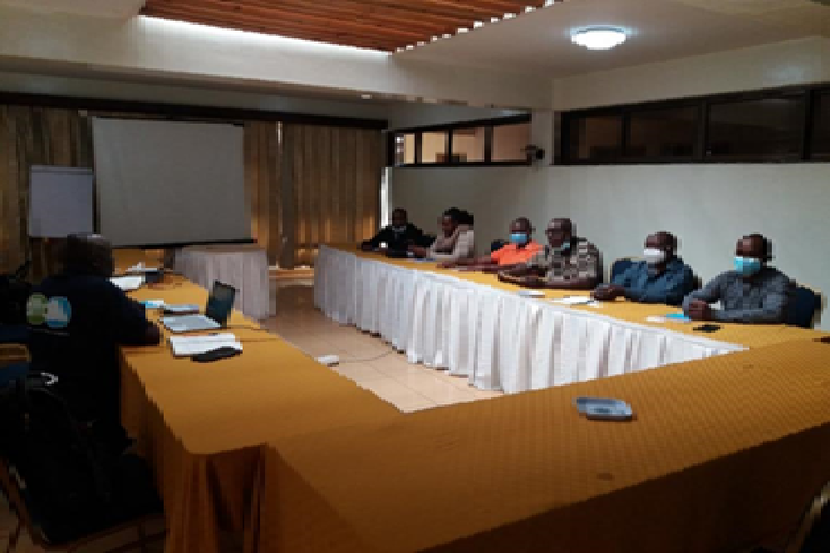
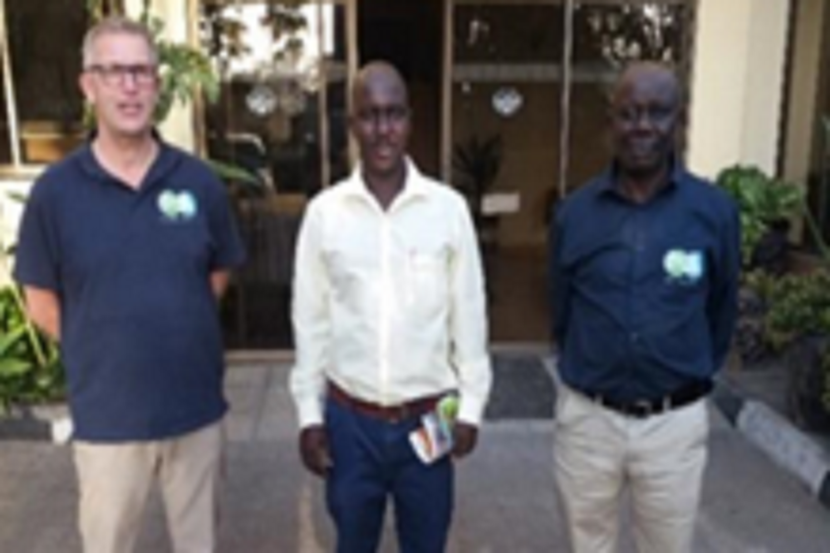
Expected outcomes
Expected outcomes of the study include identification of knowledge and training needs of the inseminators in Nakuru County and the Directorate of Veterinary Services staff. The generated knowledge would point to business opportunities not only in the breeding sector but also in the entire Kenyan dairy value chain. Among these business opportunities are practical training, consultancy/advisory services, new technologies, products and services by Kenyan and Dutch companies. Others include feed, fodder production and conservation, farm machinery and agricultural contracting services, cow barn design, development, and interiors, herd and farm management information systems/software; herd improvement, milking, milk cooling and processing equipment as well as financial and fiscal policies.
“We welcome the cooperation between the Embassy of the Netherlands and the Nakuru County Government regarding promotion of the AI service provision in the county. Strengthening the knowledge and skills capacities of the inseminators on technical and economic dairy farm management is quite necessary.” – Dr. Alice Wanjema, former Nakuru County Director of Veterinary Services
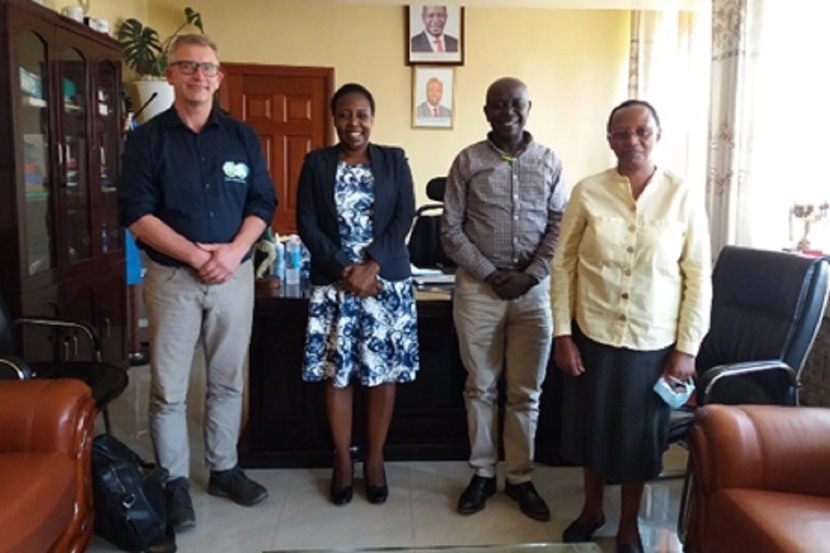
(L to R) Mr. Han Tellegen (DTC), Dr. Immaculate Maina (former Nakuru County CECM for Agriculture, Livestock and Fisheries), Mr. Eric Kimalit (DTC), and Dr. V. W. Wanjohi (Ag. CDVS, Nakuru) in the CECM Office, Nakuru, during interviews in 2022
Importance of Dairy Production Agricultural Sector in Kenya
Dairy cattle production in Kenya is the second largest contributor to the country’s agricultural Gross Domestic Product (FAO, 2018). Livestock production as a whole contributes about 13.4% (USD.3.1 billion) to agricultural value-added incomes. The country produced over 5.52 billion litres of milk in 2019. Per capita consumption was approximately 117 litres of milk per year by 2014 (FAO, 2018). The dairy sector is a major source of employment in rural areas with smallholder farms being pervasive and producing about 80% of the total milk in the country (FAO, 2018).
The business opportunities that can be realized from the generated knowledge will be used by the breeding sub-sector stakeholders to increase successful inseminations in the country at large. This will, in turn, lead to increased milk productivity among the cows in the herds which will bring about enhanced agricultural gross domestic product, increased agriculture-based job opportunities, increased farmer household incomes, improved food and nutrition security as a whole.
If you have questions for Dairy Training Centre, contact Han Tellegen on h.tellegen@dairytrainingcentre.com or Eric K. Kimalit on kimalit2002@gmail.com . In case of questions for the Agricultural Counsellor, contact us via nai-lnv@minbuza.nl. For the latest updates follow us on twitter @NLAgriKenya.
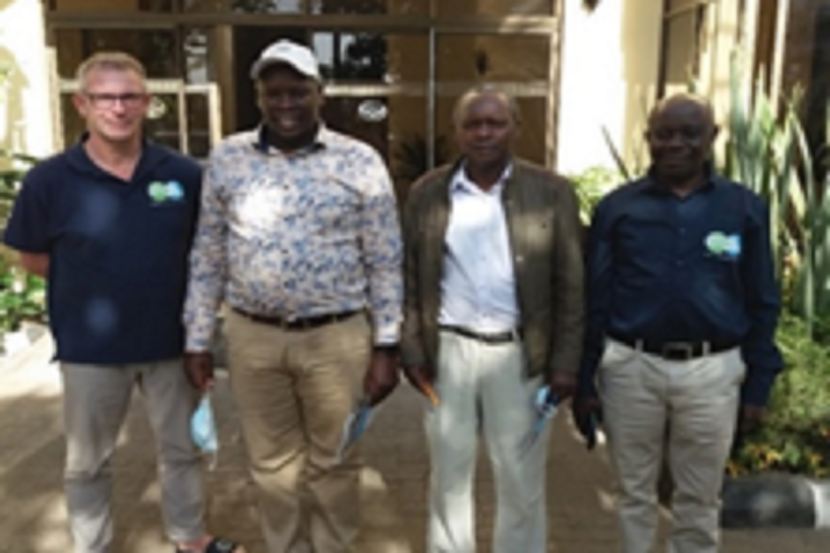
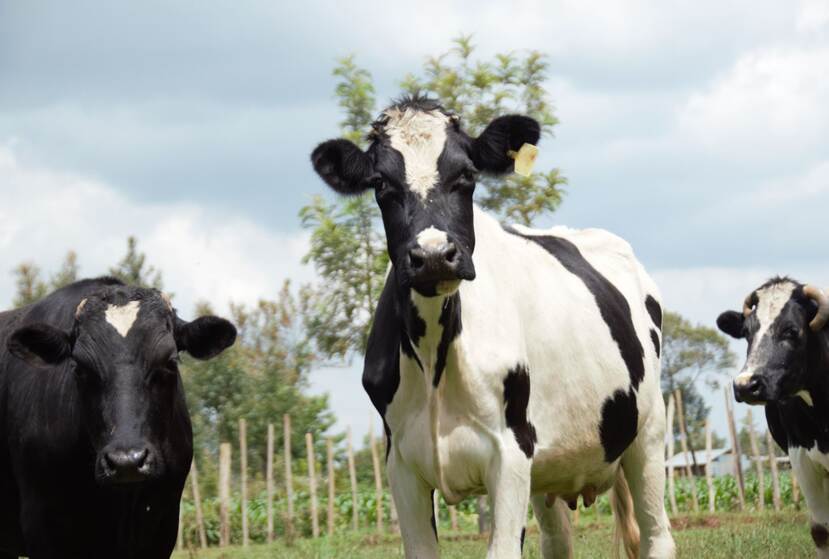
Findings of the Study
The study revealed that the value of Kenya’s AI business is USD.11 million at the current rate of breeding heifers and cows in the country’s dairy herds. AI use in these herds has a potential to generate over USD.37.6 million at the current 60% of dairy cattle insemination rate. In the Kenya, 95% of the artificial inseminations carried out in cattle go to dairy cattle whereas the beef cattle take the remaining 5%. The organization of the AI value chain is in place with institutional instruments that provide for governing the roles of the various stakeholders at the national and county levels.
It was not easy to get relevant data from some national and county government departments and this is largely attributable to inadequate AI service-related record keeping and analysis. financial constraints ultimately contributed to low successful inseminations in Kenya as a result of ineffective discharge of mandate by some stakeholders . Nakuru County is willing and trying to improve the breeding sector through support to extension service provision and investment in several packages like liquid nitrogen and vats for inseminators, although it is constrained financially.
On the other hand technical and financial constraints also affected the role of the County Director of Veterinary Services (CDVS). This led to s a capacity gap in the supervision and coordination of the AI value chain service providers as well as data documentation and reporting. This was coupled with knowledge and skill gaps which were also noted
The inseminators were noted to have inadequate knowledge in dairy fertility management, breeding programmes, farm economics and analysis, entrepreneurial skills, as well as training of trainers’ skills among other aspects as stipulated in the report. It was also found that the inseminators do not work in organized groups but instead operate individually while competing with one another in their respective areas of operation. Similarly, some inseminators were noted not abide by the law governing their activities including failure to register with KVB, attend Continuous Professional Development (CPD) training and reporting to what they do to the CDVS.
More information
To read the report, go to: Assess the Knowledge and Capacity Needs of Inseminators in Nakuru and Directorate of Veterinary Services
If you have questions for Dairy Training Centre, contact Han Tellegen on h.tellegen@dairytrainingcentre.com or Eric K. Kimalit on kimalit2002@gmail.com .
For more information about this sector or any other agricultural questions feel free to contact us via nai-lnv@minbuza.nl. For the latest updates on activities, new articles and more follow us on X (Twitter) on @NLAgiKenya and subscribe to our newsletter by sending us an email. In case of any non-agriculture questions for the Netherlands Embassy in Nairobi, see this website for contact information